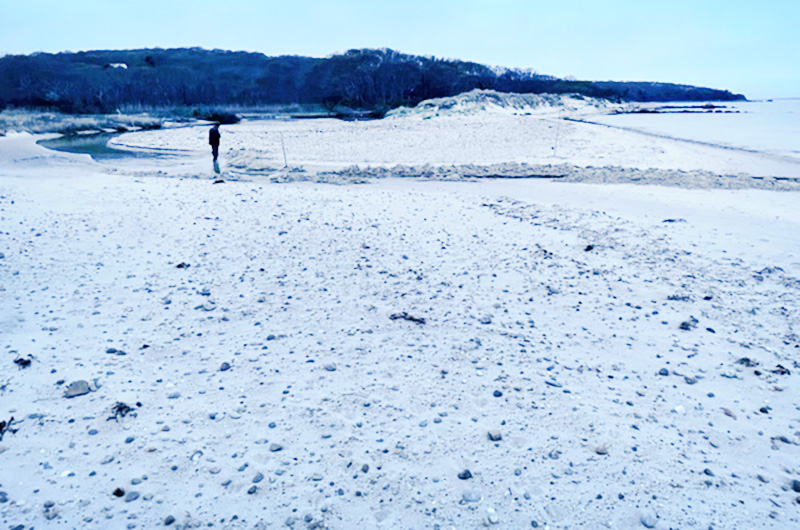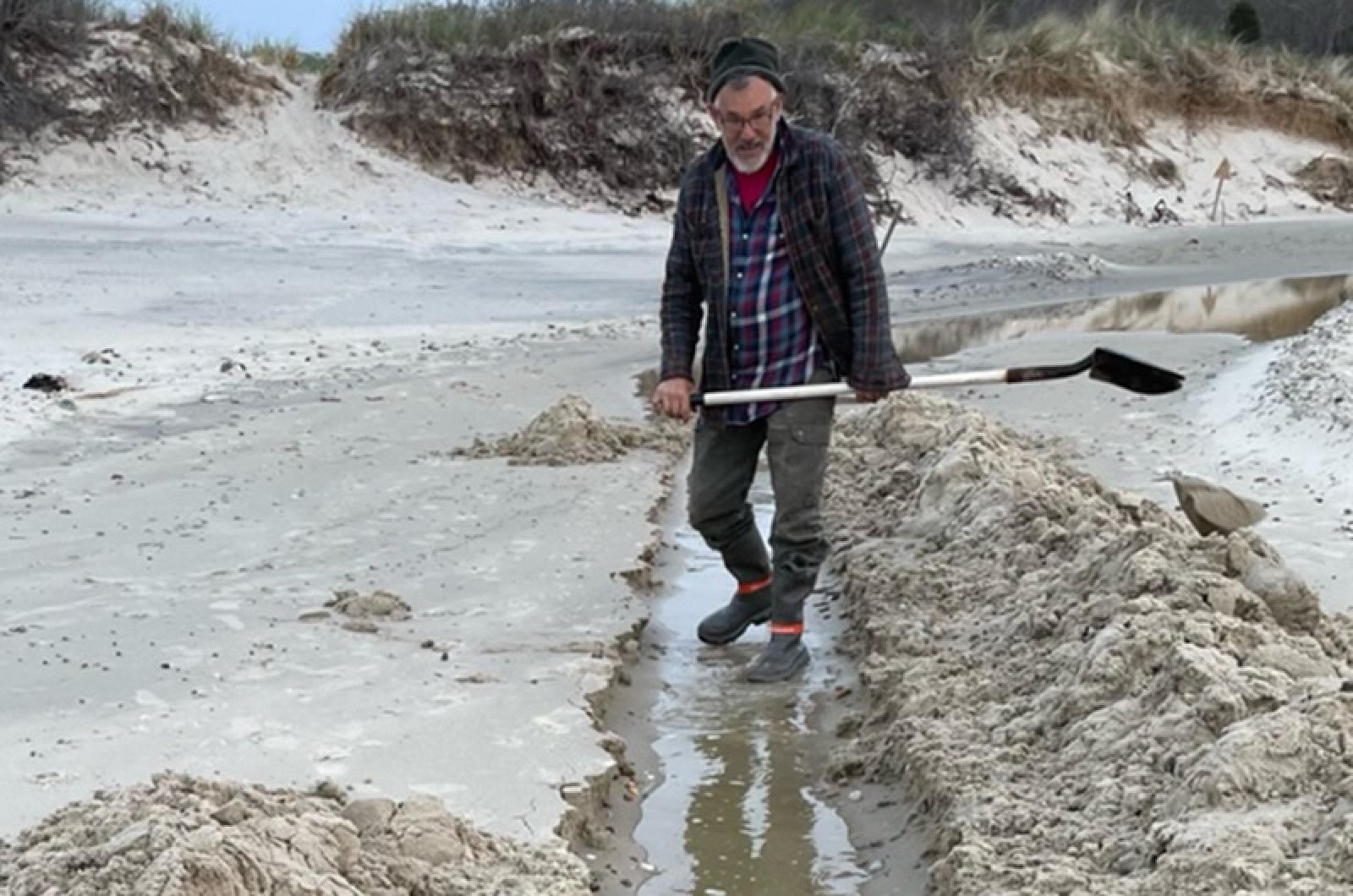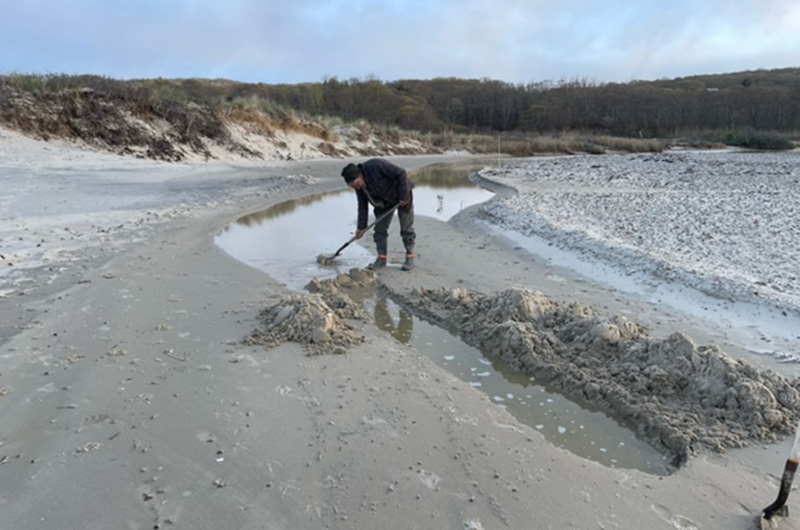With the water still cold, John Hoy thinks a lot more alewives are coming.
“There’s a ripple up here where they’ve got to go through shallow water. Come down here in a couple days and walk the creek and look carefully; you’ll see the scales where the otters get them,” the West Tisbury herring warden said.
We were standing at the edge of James Pond overlooking Vineyard Sound last Thursday evening. When last week’s big northerly closed the cut into pond, as soon as the wind died and before the sun set, Mr. Hoy went out with his shovel and began the one-man work of opening it back up. “We’re just trying to help them,” he said, speaking about the alewives.
Mr. Hoy works with the state Department of Marine Fisheries to maintain breeding habitats for anadromous fish — those that go from saltwater to fresh water to reproduce. By digging the cut open again at James Pond, he will maximize the opportunity for one of our two local species of river herring to breed.
Both alewives and blueback herring return to their natal rivers to spawn every four to five years. Juvenile herring typically navigate back to the marine environment in the fall. And when they do, when Mr. Hoy will be on hand to maintain the cut again.
“Usually it closes in a big southwest, but we’ve had a lot of northers this spring,” the seasoned waterman said. With his shovel he carved a canal perpendicular to Lambert’s Cove beach. At its upper end, the 30-yard, two-foot wide channel connected to the sandy bank of James Pond.

“Sometimes it’s a little hard to get it to run in the beginning,” he said, excavating humps from the bottom of his canal before breaking it open to the bodies of water on either side of the span. “You come down here tomorrow, or in a couple days, and it will be 20 feet wide. Sometimes it takes a couple tides before it gets running. There isn’t a lot of water in the pond.”
“This isn’t a big breeding ground for the bluebacks,” he continued. “They lay their eggs in moving water. They’ll go up the Tiasquam.” The Tiasquam is a fast-running stream that connects from Town Cove, in the back of the Tisbury Great Pond, deep into the woods above Middle Road.
“Alewives, the inside of the abdominal cavity is white; the blueback herring is black. Otherwise you can’t really tell them apart,” Mr. Hoy said.
Until relatively recently, herring and herring runs were a significant part of the culture and the economy of southeastern Massachusetts. According to NOAA, historically the populations reached into the hundreds of millions.
But the anadromous life cycles of river herring make them vulnerable to environmental changes caused by human activity. Dams and pollution have drastically reduced their populations. They’ve returned in some areas around the Northeast, where people have made an effort to help them, mostly by removing obstacles or helping the fish navigate around them.
The sun ghosted the horizon and the trickle of water in the new cut broke into a run. Water the color of weak tea, full of nutrients from being enclosed and surrounded by land, tumbled into the clear water of the sound. Two horseshoe crabs the sizes of saucers propelled themselves into that first voluminous rush. Twenty feet from the cove, where the stream had grown rapid, they began to tumble.
“Hi guys,” Mr. Hoy greeted the crabs. “That’s really cool. They must have got closed in. They’re leaving.”
He leaned on his shovel, his work done until next time.








Comments (6)
Comments
Comment policy »